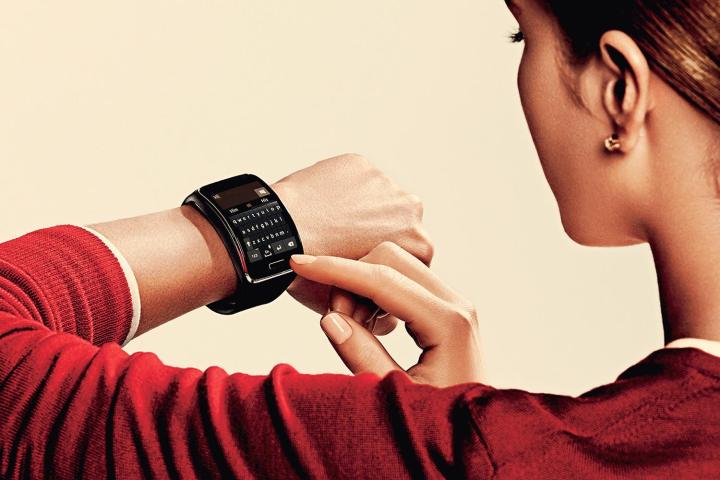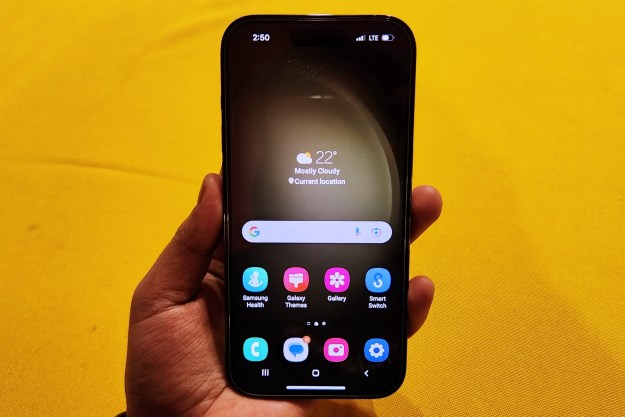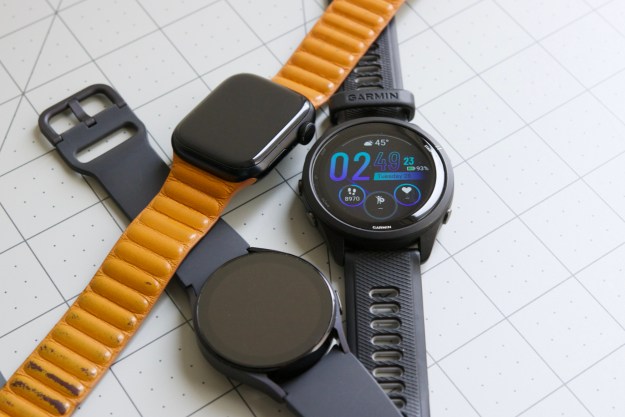
Which company’s gadgets do you want to wear for the next decade?
Overly dramatic? A bit, perhaps. But we’re in the early stages of wearable technology adoption, and if past gadgets are any indication, the decisions we make now will likely follow us well into the future. When was the last time you changed smartphone operating systems? For most of us, it’s something we try not to make a habit of.
The battlefield in the war for ecosystem dominance will play out on the battlegrounds that are our bodies.
It’s the digital equivalent to moving your office — you’ve got to move a bunch of files, learn your way around the new place, maybe redistribute the new address to all of your colleagues. When it’s all over, maybe the view is a little nicer or the monthly bills are a bit cheaper, but you also have a fresh reminder of precisely why you were reluctant to go through the rigmarole in the first place.
That, of course, is exactly how technology companies like it. Once they’ve got you in their shiny electronic claws, they fully intend to keep you — and part of that is making it a pain to transition away. It’s a lesson Apple learned a long time ago: Make a bunch of devices that work well together and you just made a customer for life.
So far, that model has been pretty simple: Smartphone purchases inform tablet purchases. After all, you’ve already gotten comfortable with an operating system and invested some hard-earned multiple of 99 cents across an app store. You might as well just keep it in the family, right?
The battlefield in the war for ecosystem dominance will play out on the battlegrounds that are our bodies. For the moment, the stakes are pretty low. We have a whole lot of companies waging a land war for a small amount of wrist real estate. Naturally, this is set to change a good deal in the coming years, both as wrist-worn devices become more prevalent and as wearables in general begin staking their claims on other parts of our bodies.

As someone who routinely tests out these sorts of devices, I’ve actually spent the better part of the last few months wearing different products from different companies on separate wrists. Given just how rapidly new wearable varieties are being developed these days, it’s easy to project a nightmare scenario wherein our entire bodies are covered in different wearables with unique functionality and fully independent operating systems.
In that world, it’s easy to see how sticking with a certain company is about more than just some abstract brand allegiance, it will be about keeping this complicated world a little simpler. After all, wearables are supposed to make things easier, and fragmenting different body metrics across different apps or ecosystems is anything but.
This means that whoever wins the wrist wins a gateway to the rest of the body. It’s a cornerstone (a corner wrist anyway), and over the next few years we’re likely to see companies build on that foundation. Ow.
Make a bunch of devices that work well together, and you may just have made a customer for life.
If we push back further, however, it becomes readily apparent that a handful of companies already have a leg up on the competition. After all, as much as any single application might someday serve as a focal point for our entire wearable experience, we’ve already got the hub on us at all times — though it usually lives in our pants pockets, rather than our wrists.
Companies like Apple and Samsung have the ultimate weapon in the war of the wearables: They manufacture the devices that hold the whole thing together. Most current wearables are far from being their own standalone computers. They’re monitoring devices — a configuration of sensors designed to collect information and transmit it back a central mothership.
Was anyone surprised when the Apple Watch was announced as being only compatible with iOS? Sure, Apple will likely adjust its battle plan down the road, but for the time being, the company’s focus is ensuring the best possible cross-platform experience, and for Apple that means exactly what it has always meant: tightly controlling as many aspects of the process as possible.

Apple fans will most assuredly flock to the Apple Watch in some number, assured that it will function perfectly with their Macs, iPhones, and iPads. Samsung’s made an even bolder initial play by bundling the Gear together with the Note. Along with the promise that you were buying into more than just a discount on pricey gadgets, you were entering this brave new world of wearables on the right foot.
With each subsequent product you purchase, the more difficult it becomes to escape the pull of the ecosystem. Once upon a time, “fanboys” had a conscious allegiance to a given company and its credo; these days more people find themselves slipping into that allegiance subconsciously, far away from the comment section flamewars. It’s just easier to stick with one platform.
Sure, all this is a lot to take in as you stand in the retail section of your local big box store, deciding between a neon green smartwatch and a stainless steel one. I’m just suggesting not to take the whole thing lightly. It’s your body, after all.
Editors' Recommendations
- Every Samsung gadget we still expect in 2024
- These are the 5 smartwatches you should look forward to in 2024
- Xiaomi’s newest wearables may make you want to ditch your Apple Watch
- This app gives any smartwatch underwater superpowers
- Don’t update your Apple Watch unless you want this ugly display bug


